A combinatorial genetic strategy for exploring complex genotype-phenotype associations in cancer
- PMID: 38424461
- PMCID: PMC10937382
- DOI: 10.1038/s41588-024-01674-1
A combinatorial genetic strategy for exploring complex genotype-phenotype associations in cancer
Abstract
Available genetically defined cancer models are limited in genotypic and phenotypic complexity and underrepresent the heterogeneity of human cancer. Here, we describe a combinatorial genetic strategy applied to an organoid transformation assay to rapidly generate diverse, clinically relevant bladder and prostate cancer models. Importantly, the clonal architecture of the resultant tumors can be resolved using single-cell or spatially resolved next-generation sequencing to uncover polygenic drivers of cancer phenotypes.
© 2024. The Author(s).
Conflict of interest statement
J.K.L. served on the Speaker’s Bureau for Mission Bio. B.M.F. has consulting or advisory roles with QED Therapeutics, Boston Gene, Astrin Biosciences Merck, Immunomedics/Gilead, Guardant and Janssen and receives patent royalties from Immunomedics/Gilead and research support from Eli Lilly. All other authors declare no competing interests.
Figures
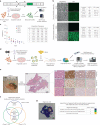
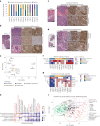
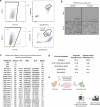
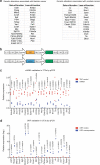


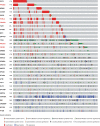
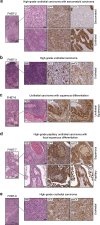
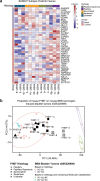
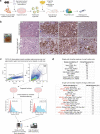
Update of
-
Combinatorial genetic strategy accelerates the discovery of cancer genotype-phenotype associations.bioRxiv [Preprint]. 2023 Apr 14:2023.04.12.536652. doi: 10.1101/2023.04.12.536652. bioRxiv. 2023. Update in: Nat Genet. 2024 Mar;56(3):371-376. doi: 10.1038/s41588-024-01674-1. PMID: 37609344 Free PMC article. Updated. Preprint.
Similar articles
-
Combinatorial genetic strategy accelerates the discovery of cancer genotype-phenotype associations.bioRxiv [Preprint]. 2023 Apr 14:2023.04.12.536652. doi: 10.1101/2023.04.12.536652. bioRxiv. 2023. Update in: Nat Genet. 2024 Mar;56(3):371-376. doi: 10.1038/s41588-024-01674-1. PMID: 37609344 Free PMC article. Updated. Preprint.
-
Retrospective genotype-phenotype analysis in a 305 patient cohort referred for testing of a targeted epilepsy panel.Epilepsy Res. 2018 Aug;144:53-61. doi: 10.1016/j.eplepsyres.2018.05.004. Epub 2018 May 16. Epilepsy Res. 2018. PMID: 29778030
-
Genetic and phenotypic heterogeneity of human malignancies: finding order in chaos.Cytometry. 1995 Sep 1;21(1):2-5. doi: 10.1002/cyto.990210103. Cytometry. 1995. PMID: 8529466 Review.
-
Genetic and phenotypic landscape of the major histocompatibilty complex region in the Japanese population.Nat Genet. 2019 Mar;51(3):470-480. doi: 10.1038/s41588-018-0336-0. Epub 2019 Jan 28. Nat Genet. 2019. PMID: 30692682
-
Investigation of clinically relevant germline variants detected by next-generation sequencing in patients with childhood cancer: a review of the literature.J Med Genet. 2018 Dec;55(12):785-793. doi: 10.1136/jmedgenet-2018-105488. Epub 2018 Oct 4. J Med Genet. 2018. PMID: 30287599 Review.
Cited by
-
CRISPR/Cas9 technology in tumor research and drug development application progress and future prospects.Front Pharmacol. 2025 Jul 8;16:1552741. doi: 10.3389/fphar.2025.1552741. eCollection 2025. Front Pharmacol. 2025. PMID: 40697666 Free PMC article. Review.
-
Integrated in vivo combinatorial functional genomics and spatial transcriptomics of tumours to decode genotype-to-phenotype relationships.Nat Biomed Eng. 2025 Jul 28. doi: 10.1038/s41551-025-01437-1. Online ahead of print. Nat Biomed Eng. 2025. PMID: 40721510
-
Therapeutic Potential of Glucose Oxidase-Loaded Biogenic Mesoporous Silica Nanoparticles in Ovarian Cancer.Pharmaceuticals (Basel). 2025 Jul 18;18(7):1060. doi: 10.3390/ph18071060. Pharmaceuticals (Basel). 2025. PMID: 40732346 Free PMC article.
-
N7-methylguanosine modification in cancers: from mechanisms to therapeutic potential.J Hematol Oncol. 2025 Jan 29;18(1):12. doi: 10.1186/s13045-025-01665-7. J Hematol Oncol. 2025. PMID: 39881381 Free PMC article. Review.
-
Defined cellular reprogramming of androgen receptor-active prostate cancer to neuroendocrine prostate cancer.bioRxiv [Preprint]. 2025 Mar 7:2025.02.12.637904. doi: 10.1101/2025.02.12.637904. bioRxiv. 2025. PMID: 40027790 Free PMC article. Preprint.
References
MeSH terms
Grants and funding
LinkOut - more resources
Full Text Sources
Medical
Molecular Biology Databases

